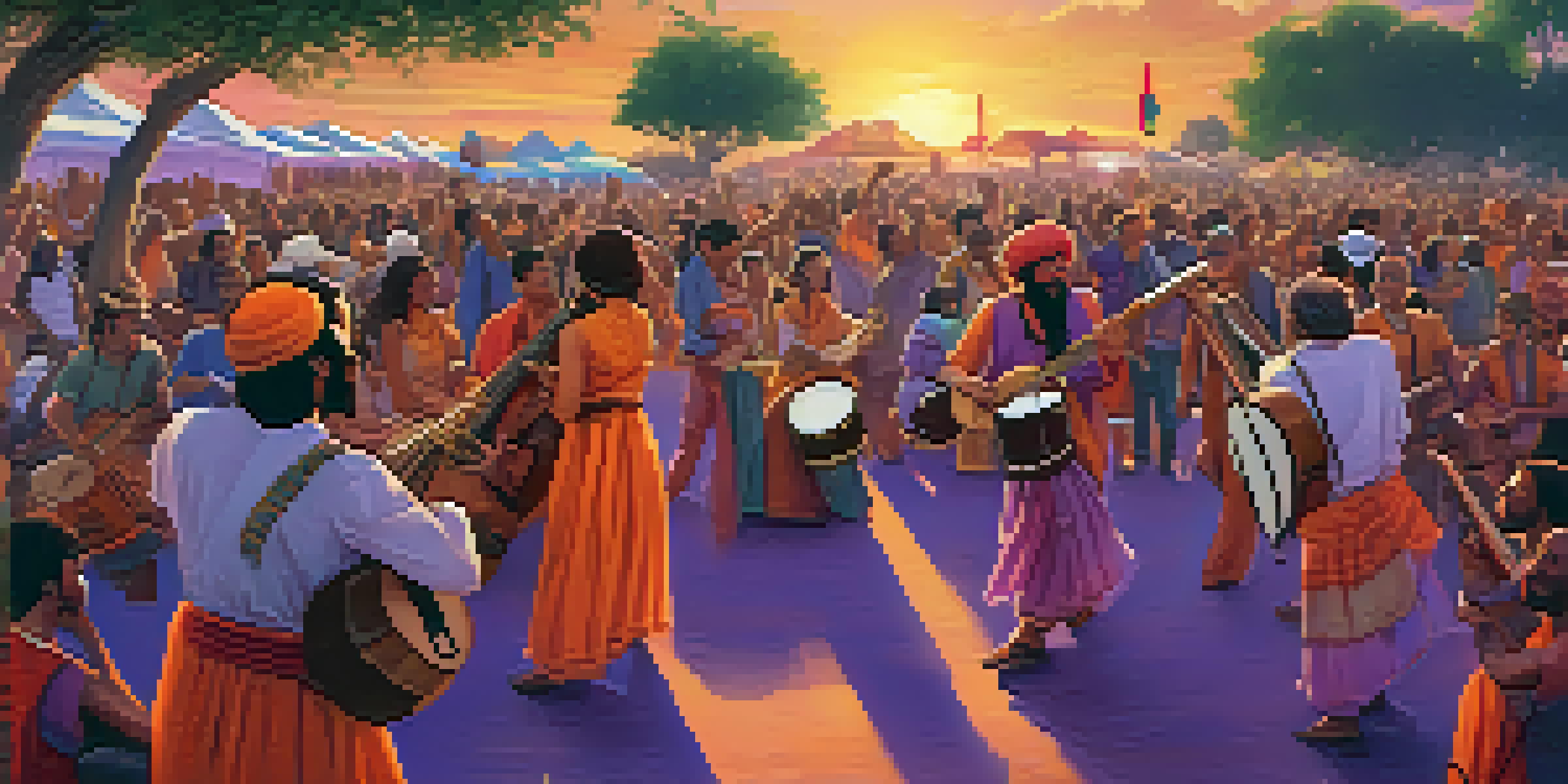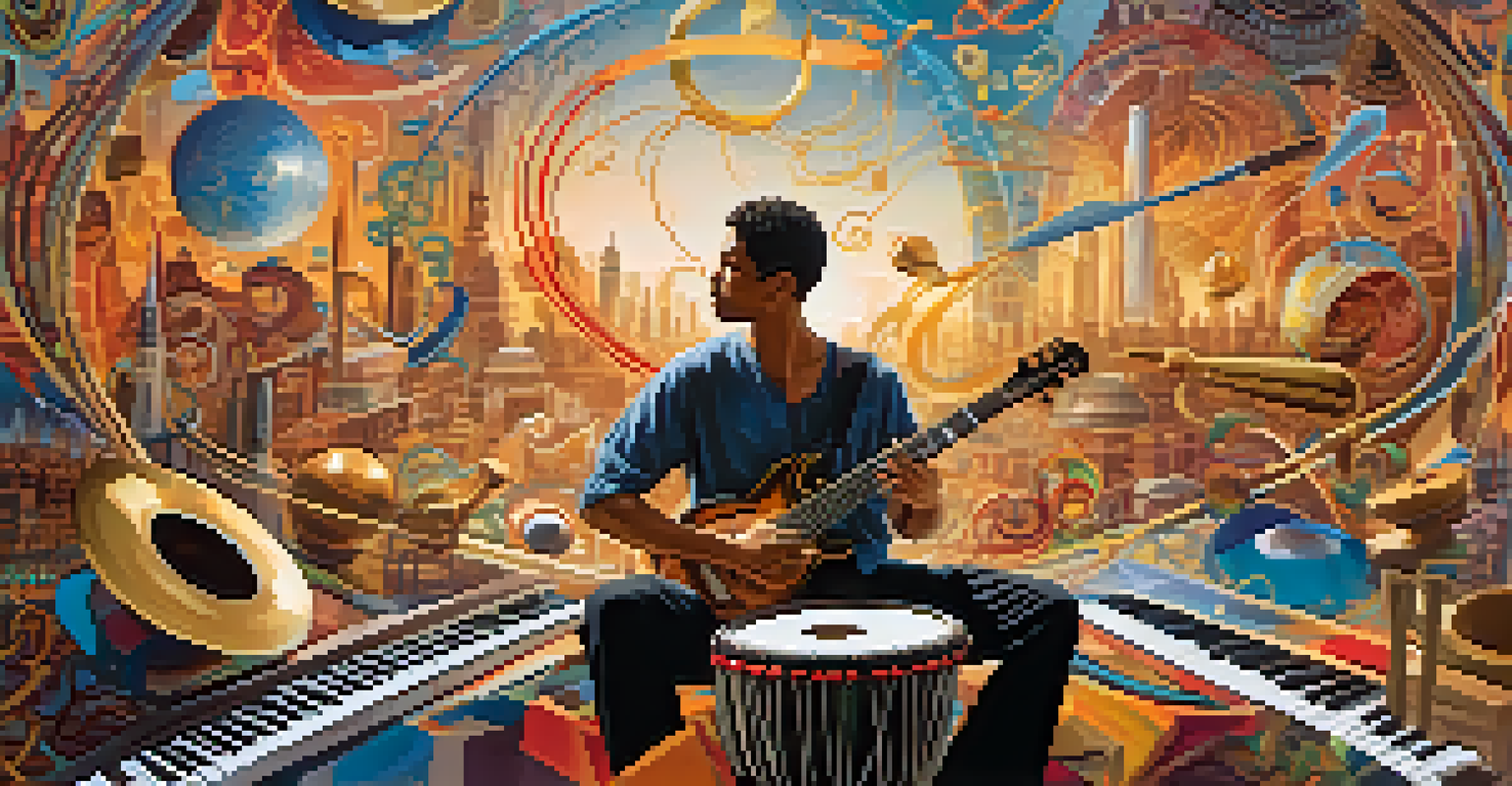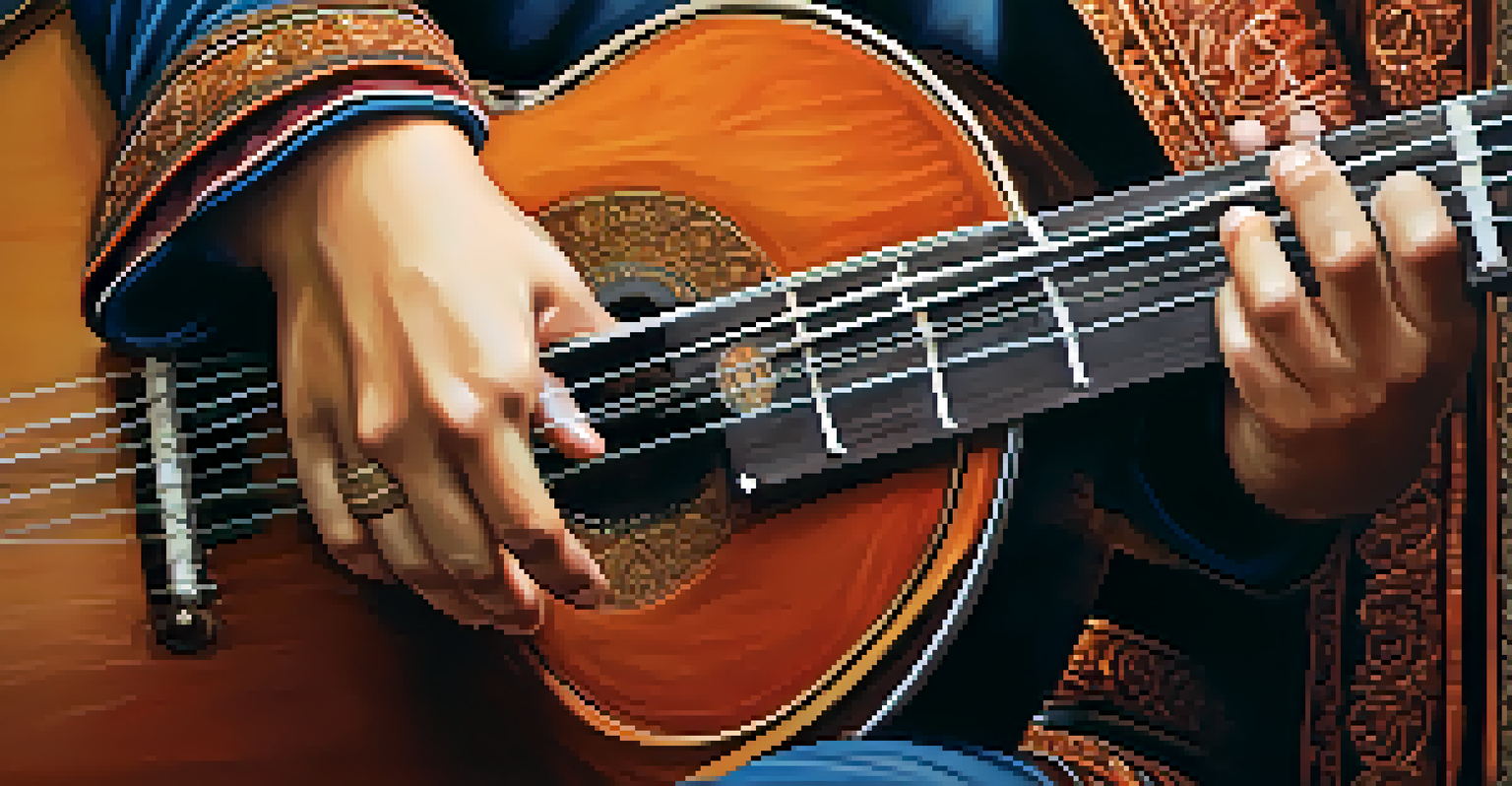The Influence of World Music on Western Popular Genres

The Roots of Global Sounds in Western Music
The fusion of world music with Western genres has deep historical roots. From the early days of jazz in the 20th century, musicians were inspired by African rhythms and melodies. This cross-pollination of sounds laid the foundation for many popular styles we enjoy today. Artists like Louis Armstrong and Duke Ellington embraced these influences, creating a rich tapestry of musical innovation.
Music is the universal language of mankind.
As the decades rolled on, the integration of global sounds continued to evolve. The Beatles, for example, famously incorporated Indian instruments into their music, bringing the sitar into the mainstream. This not only broadened their sound but also introduced new cultural elements to Western audiences. Such collaborations opened doors for other artists to explore diverse musical traditions.
Today, we see a vibrant blend of genres that often go beyond traditional boundaries. Artists like Shakira and Drake seamlessly weave Latin and Caribbean rhythms into their work, reflecting a more interconnected world. This blending of styles highlights the ongoing influence of world music in shaping contemporary sounds, making it an essential component of the modern music landscape.
The Role of Technology in Music Fusion
Technology plays a pivotal role in how world music influences Western genres. With the rise of the internet and digital platforms, artists can easily access and share diverse musical traditions. This accessibility has led to a surge in collaborations between musicians from different backgrounds, resulting in unique fusion genres. For instance, platforms like SoundCloud and Spotify allow artists to experiment with sounds from around the globe.

Sampling technology also enables musicians to incorporate elements from various cultural backgrounds into their work. This practice has become commonplace in hip-hop, where beats and melodies from international music are often layered with original lyrics. A well-known example is how artists like Kanye West have incorporated African and Middle Eastern sounds into their tracks, creating a fresh auditory experience.
Global Sounds Shape Modern Music
The fusion of world music with Western genres enriches contemporary sounds and reflects cultural interconnectedness.
The ability to produce and distribute music digitally means that artists can reach wider audiences. This global reach often leads to the blending of genres, as fans of different styles discover new music. As a result, we see a continuous cycle of influence, where Western artists draw from world music and vice versa, enriching the overall music scene.
Cultural Exchange and Collaborative Projects
Cultural exchange through music can be seen in numerous collaborative projects that bring together diverse artists. Initiatives like the 'One World' concerts have showcased musicians from various backgrounds, emphasizing unity through music. These events not only celebrate diversity but also highlight the similarities between different musical traditions. The blending of unique sounds creates a powerful message of harmony and understanding.
The beauty of music is that it transcends all boundaries and unites us in ways we cannot express with words.
Collaboration often results in groundbreaking tracks that resonate widely. For example, the collaboration between American rapper J. Balvin and Colombian singer Shakira in 'La La La (Brazil 2014)' beautifully merges reggaeton with pop, appealing to a global audience. Such projects exemplify how cultural exchange can lead to innovative music that transcends borders.
Moreover, these partnerships foster a deeper appreciation of global music traditions among listeners. When artists from different backgrounds come together, they share their cultural stories and experiences, enriching the narrative of their music. This not only broadens the listener's musical palate but also promotes cultural awareness and respect.
World Music Genres Impacting Pop and Rock
World music genres such as reggae, Afrobeat, and bossa nova have significantly impacted the pop and rock scenes. Reggae, with its distinctive rhythms and socially conscious lyrics, has influenced countless artists, from Eric Clapton to No Doubt. The unmistakable beat and message of unity found in reggae continue to resonate, inspiring new generations of musicians.
Afrobeat, popularized by Fela Kuti, has also made its mark on Western music. Contemporary artists like Beyoncé and Drake have incorporated Afrobeat elements into their work, creating infectious sounds that captivate audiences. This genre's complex rhythms and vibrant instrumentation add depth to pop music, demonstrating the versatility of world music.
Technology Fuels Music Collaboration
Advancements in technology allow artists to easily access diverse musical traditions, leading to innovative collaborations.
Bossa nova, with its smooth melodies and intricate guitar work, has found a cozy home in Western jazz and pop. The genre's influence can be heard in the music of artists like Stan Getz and Joao Gilberto, whose collaborations brought bossa nova to the forefront of American music. These genres showcase how world music continually shapes and enriches the popular music landscape.
The Influence of Folk Traditions on Modern Music
Folk music from various cultures has a profound influence on modern music, often serving as a source of inspiration. The storytelling aspect of folk music resonates with many contemporary artists who seek to connect with their audience on a deeper level. For instance, the incorporation of traditional Irish folk tunes into pop songs has created a unique sound that pays homage to cultural roots while appealing to mainstream listeners.
Artists like Mumford & Sons have successfully blended folk elements with rock, creating a sound that captures the essence of both genres. Their use of traditional instruments like the banjo and mandolin adds an authentic touch to their music, drawing from the rich history of folk traditions. This fusion not only honors the past but also makes folk music accessible to a new generation.
Moreover, the revival of folk traditions in popular music often leads to a resurgence of interest in cultural heritage. As more artists explore their roots, listeners are encouraged to appreciate the stories and histories behind the music. This connection fosters a sense of community and belonging, reinforcing the idea that music is a universal language that transcends cultural boundaries.
The Impact of World Music Festivals on Popularity
World music festivals have become significant platforms for promoting global sounds within the Western music scene. Events like the WOMAD (World of Music, Arts and Dance) festival showcase artists from various cultures, giving them exposure to new audiences. These festivals celebrate diversity and foster appreciation for different musical traditions, often leading to cross-genre collaborations.
The rise of world music festivals has also encouraged Western artists to explore and incorporate global influences into their work. Many musicians attend these festivals not only to perform but also to learn from their peers. This mutual exchange of ideas and sounds often results in innovative music that reflects a broader cultural landscape.
Festivals Promote Cultural Exchange
World music festivals serve as vital platforms for showcasing diverse cultures, fostering appreciation and collaboration among artists.
Furthermore, the growing popularity of such festivals has contributed to the mainstream acceptance of world music. As audiences become more familiar with these diverse sounds, they seek out artists who reflect this rich tapestry of influences. This trend has led to a more inclusive music industry, where various genres coexist and thrive.
Future Trends: The Evolution of Musical Fusion
As we look towards the future, the evolution of musical fusion continues to unfold. With the ongoing globalization of music, we can expect even more innovative blends of genres. Artists are increasingly experimenting with sounds from around the world, creating fresh and exciting musical landscapes. This trend not only reflects the interconnectedness of our societies but also enhances the overall richness of the music we consume.
Emerging technologies, such as artificial intelligence and virtual reality, are expected to play a major role in shaping the future of music. These advancements may enable artists to collaborate in entirely new ways, breaking down geographical barriers. Imagine musicians from different corners of the globe coming together in a virtual studio to create unique sounds, blending their cultural influences seamlessly.

Ultimately, the influence of world music on Western popular genres will continue to grow. As artists draw inspiration from diverse traditions, they will weave new narratives into their music, reflecting the complexities of our ever-evolving world. This ongoing dialogue between cultures will undoubtedly lead to exciting developments in the music landscape, inviting listeners to explore the beauty of global sounds.